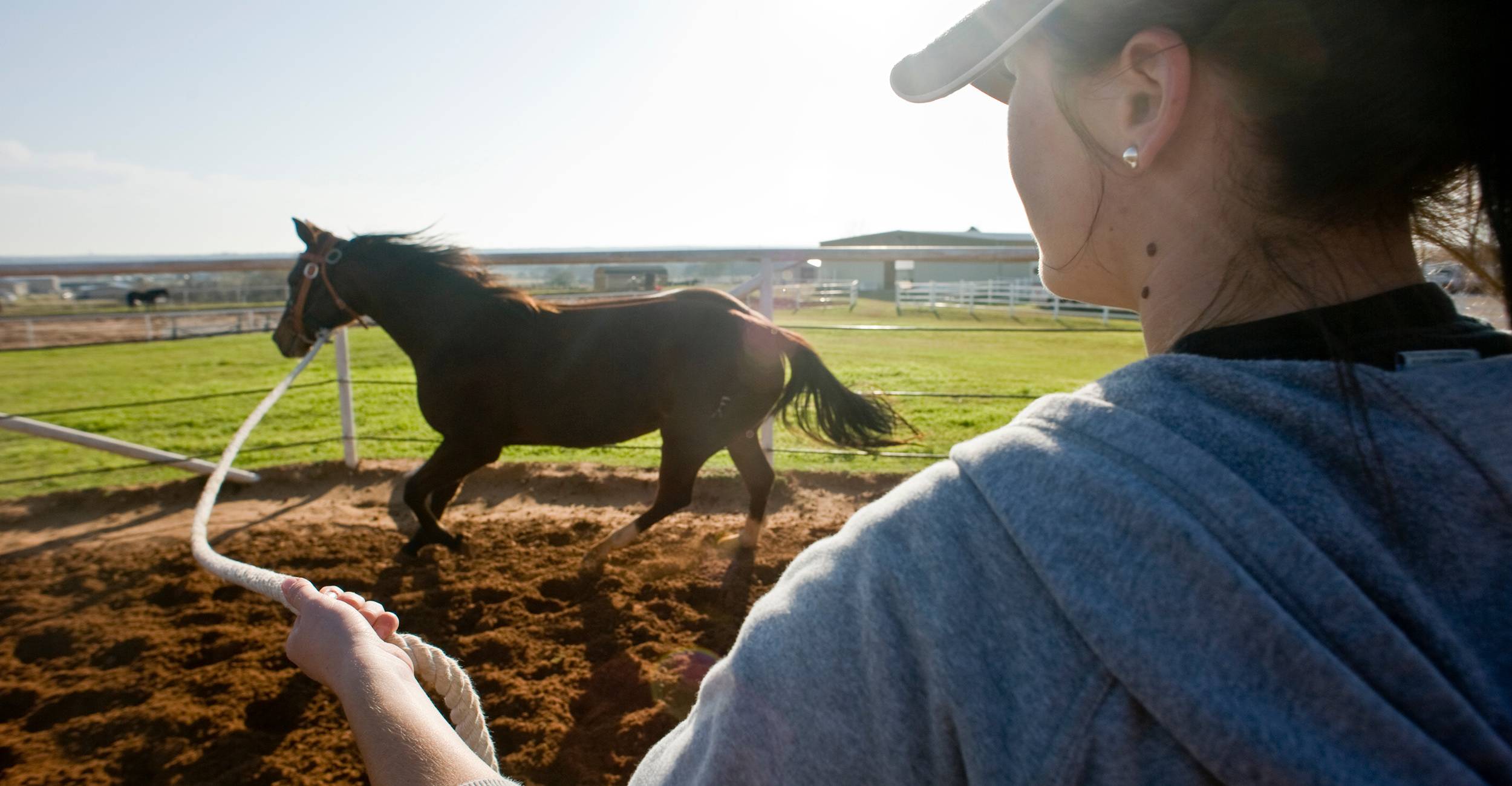
Keys to promoting sound growth in young horses
Friday, April 16, 2021
Media Contact: Donald Stotts | Agricultural Communications Services | 405-744-4079 | donald.stotts@okstate.edu
Young horses tend to be more individualistic than most classes of equines in their nutrient requirements and how they respond to types of exercise, said Oklahoma State University Extension experts.
"Familiarity with each specific animal is important to good management,” said Kris Hiney, OSU Extension equine specialist with the university’s Department of Animal and Food Sciences. “Knowing what is normal for each yearling helps the horse manager to adjust nutrition and exercise levels, as well as more quickly detect minor indications that may lead to physical problems.”
Healthy growth is a combination of good genetics, nutrition and exercise. Exercise stimulates appetite so the young horse will eat more. In turn, the feed helps the animal build muscle and bone, which also are stimulated by exercise. Nutrition programs need to supply the correct balance and amount of nutrients to support bone and lean muscle tissue growth without pre-disposing a young horse to unnecessary fat accumulations.
Most young horses consume between 2% to 3% of their body weight in combined grain and forage per day. OSU Extension recommendations are that 30% to 40% of the ration be forage in the form of highly palatable hay or pasture.
Total rations should supply 13% to 14% protein, 0.5% to 0.6% lysine and calcium, and 0.3% phosphorus, Hiney said. Rations needs to be clean, fresh and easily digestible.
Exercise programs that promote healthy growth can differ in type, intensity and frequency – just take care not to overexert the horse’s ability to respond positively. Examples include:
- Turning out a young horse into a pasture for a limited amount of time, either alone or with other weanlings.
- Allowing unrestricted access to a pasture.
- Providing round-pen work, which keeps weanlings from using corners to avoid trainers.
- Longeing, a training technique of working a horse at the end of a long line, typically tracing a circle around the trainer.
- Ponying, in which the weanling is led by somebody riding another horse.
All-encompassing recommendations about levels of exercise intensity for weanlings are difficult because of individual differences in how they respond to exercise, in addition to specific environmental factors in which the horses are being worked. General recommendations include:
- Allow weanlings to warm up with slow work before pushing for faster speeds.
- Let weanlings cool down by reducing intensity levels before returning the animal to its stall or other housing area.
- Take care on harder surfaces because they put more stress on bones – a positive aspect if it stimulates bone strength but a negative effect if too much concussive force is produced for too long.
“Length of an exercise session can be more important than some horse managers may realize,” said Dr. Rosslyn Biggs, OSU Extension veterinarian and director of continuing education for the College of Veterinary Medicine. “Breakdown of bone can be caused as much or more by extending the length of a workout than exercise intensity.”
Fact sheets detailing research-based information about best management practices for horses and other equines are available online through OSU Extension and at OSU Extension county offices. Video segments featuring OSU horse management recommendations are available through both the agricultural television program SUNUP and OStateTV.
